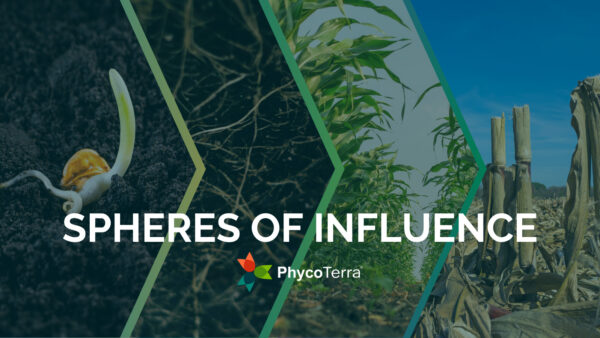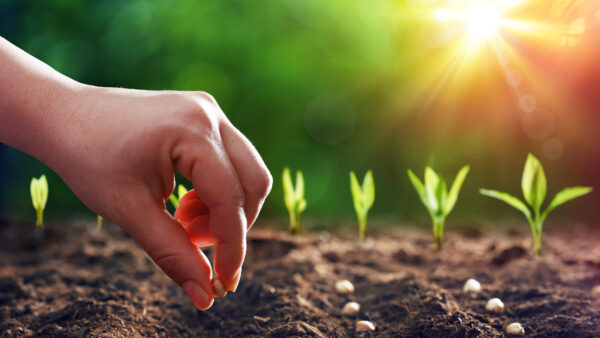A growing seed vault at Svalbard might be the key to Earth’s food security.
Lying halfway between Norway’s northern coast and the North Pole, the Svalbard Global Seed Vault, nicknamed the Doomsday Vault, has a highly effective natural security system. Polar bears living on Svalbard Island regularly wander past the outermost steel door of the vault, and their presence, teamed with three locked interior doors, the vault’s isolated location and monitoring by the Nordic Genetic Resource Center, greatly reduces the likelihood of a break-in. Why the high security? The vault’s valuable contents may one day save people from starvation.
The vault celebrated its third anniversary in February and since opening, scientists in countries around the world have sent carefully packaged seeds to this remote location for storage within the vault. The vault’s three storage chambers are filled with metal shelves holding securely fastened boxes. It’s what’s inside those boxes that could hold the key to the world’s future.
José Manuel Durão Barroso, president of the European Commission, sums it up best when he says the vault holds “a frozen garden of Eden.”
Constructing a Safe Storage Site
The impetus for constructing a secure facility to house seeds from around the world began in 2004 when the International Treaty on Plant Genetic Resources for Food and Agriculture was adopted. This international legal framework aims to guarantee food security through conservation, exchange and sustainable use of the world’s plant genetic resources and the fair and equitable sharing arising from their use. The seed vault is managed through an agreement between the Norwegian government, the Global Crop Diversity Trust and the Nordic Genetic Resource Center, which oversees the seed database, additions to and removal of the stored seed and vault maintenance.
Norway’s government paid the approximately $9 million construction cost for the vault, which is built into a mountainside near the small community of Longyearbyen. Longyearbyen has an airport with regularly scheduled flights, and also a port open year-round, so seed shipments can arrive by air or sea.
To protect again the possibility of damage from rising sea levels caused by global warming, the vault’s entrance is more than 400 feet above sea level. An earthquake, measuring 6.5 on the Richter scale, struck the area shortly before the vault opened and tested its sturdy construction within a rock face.
Refrigeration lowers the vault’s interior temperature to -18 Celsius, providing an environment where seeds can be safely stored for years. Permafrost, with a temperature of about -5 Celsius, surrounds the vault, so if the refrigeration units fail, the interior temperature will remain relatively low, protecting the seeds.
The Svalbard vault offers secure seed storage not available in many countries. Most recently, the Egyptian Deserts Gene Bank in North Sinai was damaged by looters during an episode of political unrest, with equipment stolen and the cooling system damaged. Seed collections in Iraq and Afghanistan have also been looted, while a rice collection in the Philippines was threatened in a typhoon.
“However, the greatest danger facing gene banks is far less dramatic and much more insidious—the lack of reliable funding,” says Julian Laird, director of development and communications with the Global Crop Diversity Trust.
David Ellis, curator at the U.S. Department of Agriculture’s National Center for Genetic Resources Preservation in Fort Collins, Colo., says some poorer countries store their seed collections without refrigeration or moisture control, thus limiting the seeds’ viability.
Shipping Seed to Svalbard
Ellis estimates over 55,000 unique seed samples—about 20 percent of the entire U.S. seed collection—have been shipped to the Svalbard vault. This makes the USDA the largest public contributor to the Svalbard collection.
While the USDA has a well-established network of 20 seed banks within the country, and partners with Canada for back-up storage locations, Ellis says storing seed at Svalbard is important. “It adds a third secure place where we can store our collection,” he explains.
Ken Richards, research manager with Plant Gene Resources of Canada, estimates that Canada has sent about 20,000 samples, representing over 250 plant species, to the vault. Predominant among these samples are dozens of unique barley, oat and wheat varieties, as Canada has a global mandate for the safe preservation of barley and oat seed.
Laird says the Global Crop Diversity Trust is assisting developing countries with preparing, packaging and transporting samples of unique seeds from their gene banks, and is financing the deposit of samples from the international collections of the Consultative Group on International Agricultural Research. To date, 480,000 seed samples have been deposited with Trust support.
Laird says, from the Trust’s point-of-view, the Svalbard vault has been incredibly successful. With approximately 650,000 samples on its shelves, it now holds the most diverse collection of seeds anywhere on the planet after only three years of operation. “This success is due to the rapid up-take of the idea, and the widespread interest among gene banks in the facility, which the Norwegian government has built for the benefit of all,” he says.
It is possible that one day seed held in Svalbard might be used to regenerate species on the verge of extinction or to add genetic fodder to strengthen a species fighting for survival against an insect pest or plant disease—a true measure of success. Andrea Geary
For more information on the Svalbord Global Seed Vault, visit www.croptrust.org











